
North Terrace is one of the four terraces that bound the central business and residential district of Adelaide, the capital city of South Australia. It runs east–west, along the northern edge of "the square mile". The western end continues on to Port Road, and the eastern end continues across the Adelaide Parklands as Botanic Road.

The Adelaide Park Lands are the figure-eight of land spanning both banks of the River Torrens between Hackney and Thebarton and separating the City of Adelaide area from the surrounding suburbia of greater metropolitan Adelaide, the capital city of South Australia. They were laid out by Colonel William Light in his design for the city, and originally consisted of 2,300 acres (930 ha) "exclusive of 32 acres (13 ha) for a public cemetery". One copy of Light's plan shows areas for a cemetery and a Post and Telegraph Store on West Tce, a small Government Domain and Barracks on the central part of North Tce, a hospital on East Tce, a Botanical Garden on the River Torrens west of North Adelaide, and a school and a storehouse south-west of North Adelaide.

Marion is a suburb in the City of Marion, around 10 kilometres (6.2 mi) south-west of the city centre of Adelaide, the capital of South Australia. Founded as a rural village in 1838 on the banks of the Sturt River, Marion was found to have rich soil and the population expanded rapidly. Colonel William Light laid out the plan for the village, as he had done with the City of Adelaide itself.
The Pioneer Women's Memorial Garden in Park 12 of the Park Lands of Adelaide, South Australia, is a tribute to the pioneer women of South Australia. The garden was designed by landscape designer Elsie Cornish (1887-1946), and the statue created by Ola Cohn was unveiled by Lady Muriel Barclay-Harvey on 19 April 1941.

Adelaide Himeji Gardens is a traditionally-styled Japanese garden, a gift from Adelaide's sister city, Himeji in 1982. It is located in Park 18, one of the southern parts of the Adelaide Park Lands in Adelaide, South Australia.
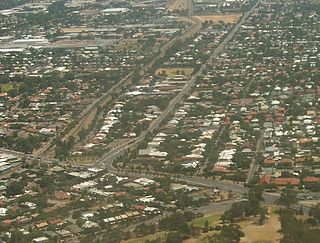
Prospect is the seat of the City of Prospect and an inner northern suburb of greater Adelaide. It is located 5 km (3.1 mi) north of Adelaide's centre.

Mawson Lakes is a residential suburb in the City of Salisbury, Adelaide, Australia. Named in honor of Sir Douglas Mawson, it has a census area population of 10,872 people. The suburb is located in the northern suburbs of Adelaide around 12 km north of the Central business district. Much of the suburb was previously known as The Levels, and was a non-residential area, housing a campus of the University of South Australia and Technology Park Adelaide.

Rose Park is a suburb with a population of 1,374 in the South Australian capital city of Adelaide. It is located 1 kilometre (0.62 mi) east of Adelaide's central business district. Rose Park is a leafy, tree-lined and wealthy inner suburb containing a number of historical and contemporary attractions. Much of the area's 19th-century housing stock has been recognised with heritage protection.
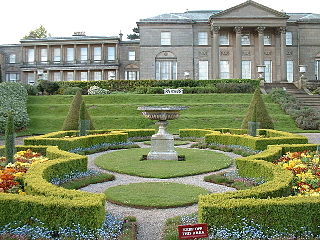
Tatton Park is an historic estate in Cheshire, England, north of the town of Knutsford. It contains a mansion, Tatton Hall, a medieval manor house, Tatton Old Hall, Tatton Park Gardens, a farm and a deer park of 2,000 acres (8.1 km2). It is a popular visitor attraction and hosts over a hundred events annually. The estate is owned by the National Trust, who administer it jointly with Cheshire East Council. Since 1999, it has hosted North West England's annual Royal Horticultural Society flower show.
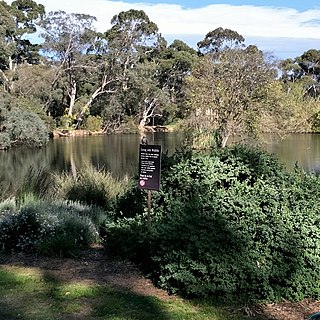
The Wittunga Botanic Garden is one of three Botanic Gardens in Adelaide, South Australia administered by the Botanic Gardens of South Australia, a State Government statutory authority; the other two are the Adelaide Botanic Garden located in the inner city's parklands, and the Mount Lofty Botanic Garden. The Wittunga garden is located on Shepherds Hill Road, Blackwood, on the western scarp of the Adelaide Hills.
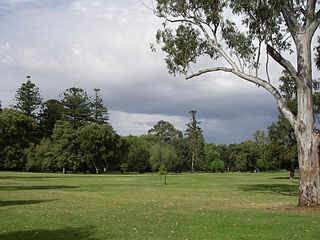
Botanic Park, part of Park 11, is a 34 hectare park in the Northeast Parklands of the South Australian capital of Adelaide. The park is bordered by Hackney Road and Frome Road. The University of South Australia, University of Adelaide, and the old Royal Adelaide Hospital are next to this park. The park also abuts the Adelaide Zoo and River Torrens.

Rymill Park / Murlawirrapurka, and numbered as Park 14, is a recreation park located in the East Park Lands of the South Australian capital of Adelaide. There is an artificial lake with rowboats for hire, a café, children's playground and rose garden, and the Adelaide Bowling Club is on the Dequetteville Terrace side. The Adelaide O-Bahn passes underneath it, to emerge at the western side opposite Grenfell Street.

Adelaide city centre is the inner city locality of Greater Adelaide, the capital city of South Australia. It is known by locals simply as "the City" or "Town" to distinguish it from Greater Adelaide and from the City of Adelaide local government area. The population was 15,115 in the 2016 census.

Pulteney Street is a main road which runs north-south through the middle of the eastern half of the Adelaide city centre, in Adelaide, South Australia. It runs north-south from North Terrace, through Hindmarsh and Hurtle Squares, to South Terrace, where it becomes Unley Road, and subsequently,, becomes Belair Road.
University Oval, referred to by the University of Adelaide, Adelaide University Sports Association and various other groups, is a part of Park 12 in the Adelaide Parklands located across the River Torrens opposite the University of Adelaide. Park 12 is bounded by North Terrace, Frome Road, Sir Edwin Smith Avenue and King William Road

The Jubilee 150 Walkway, also variously known as the Jubilee 150 Commemorative Walk, the Jubilee 150 Walk, and the Jubilee Walk, is a series of (initially) 150 bronze plaques set into the pavement of North Terrace, Adelaide in from to the Prince Henry Gardens. It was officially opened on 21 December 1986. It was commissioned as part of the celebrations commemorating the 150th anniversary of the founding of the Province of South Australia. The plaques contain the names and deeds of (initially) 170 people who made major contributions to the founding and development of South Australia. Since 1986, the Adelaide City Council has added four plaques.
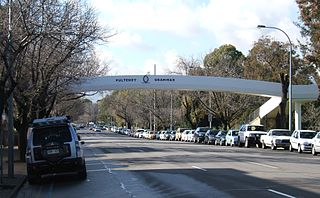
South Terrace is one of the four terraces which bound the city centre of Adelaide, the capital of South Australia.
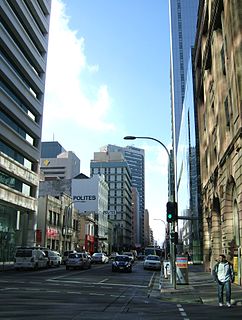
Waymouth Street, often spelt as Weymouth Street in the early days, is an east–west street running between King William Street and West Terrace in the Adelaide city centre in South Australia. The street is named after Henry Waymouth, a founding director of the South Australian Company, whose name was also sometimes spelt as Weymouth.

Park 12, is one of the 29 Parks that make up the Adelaide Park Lands. It consists of 55.5 hectares bounded by North Terrace, Frome Road, Sir Edwin Smith Avenue and King William Road
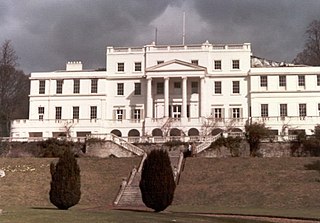
Linton Park, formerly Linton Place or Linton Hall, is a large 18th-century country house in Linton, Kent, England. Built by Robert Mann in 1730 to replace an earlier building, the house and estate passed through the ownership of several members of Mann's family before coming into the Cornwallis family. The house was enlarged to its current size in 1825.



















